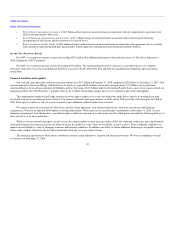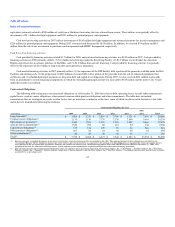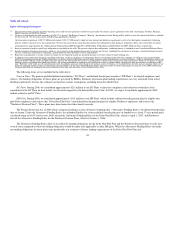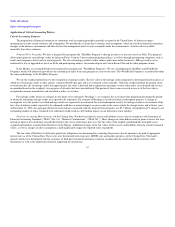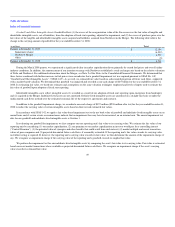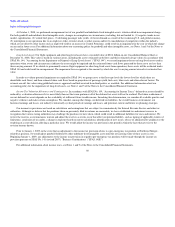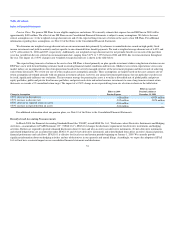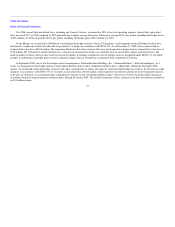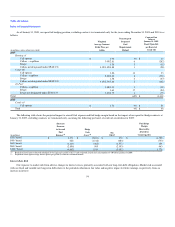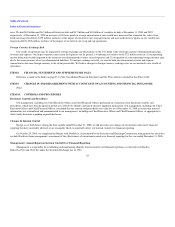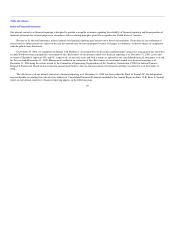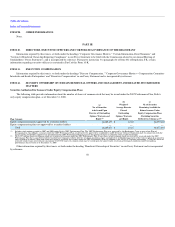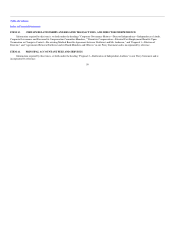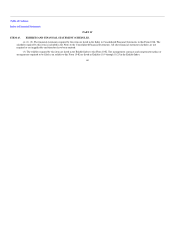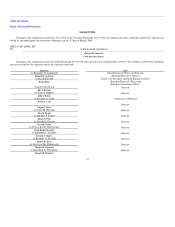Delta Airlines 2008 Annual Report Download - page 57
Download and view the complete annual report
Please find page 57 of the 2008 Delta Airlines annual report below. You can navigate through the pages in the report by either clicking on the pages listed below, or by using the keyword search tool below to find specific information within the annual report.
Table of Contents
Index to Financial Statements
In December 2007, the FASB issued SFAS 141R. SFAS 141R provides guidance for recognizing and measuring goodwill acquired in a business
combination and requires disclosure of information to enable users of the financial statements to evaluate the nature and financial effects of the business
combination. It also revises the treatment of valuation allowance adjustments related to income tax benefits in existence prior to a business combination or
prior to the adoption of fresh start reporting. Under SFAS 141, any reduction in the valuation allowance as a result of the recognition of deferred tax assets is
adjusted through goodwill, followed by other indefinite-lived intangible assets until the net carrying costs of these assets is zero. By contrast, SFAS 141R
requires that any reduction in this valuation allowance be reflected through the income tax provision. SFAS 141R is effective for fiscal years beginning on
January 1, 2009. For additional information regarding SFAS 141R, see Note 9 of the Notes to the Consolidated Financial Statements.
Glossary of Defined Terms
ASM—Available Seat Mile. A measure of capacity. ASMs equal the total number of seats available for transporting passengers during a reporting
period multiplied by the total number of miles flown during that period.
CASM—(Operating) Cost per Available Seat Mile. The amount of operating cost incurred per ASM during a reporting period, also referred to as "unit
cost".
Passenger Load Factor—A measure of utilized available seating capacity calculated by dividing RPMs by ASMs for a reporting period.
Passenger Mile Yield or Yield—The amount of passenger revenue earned per RPM during a reporting period.
RASM or PRASM—(Operating or Passenger) Revenue per ASM. The amount of operating or passenger revenue earned per ASM during a reporting
period. Passenger RASM is also referred to as "unit revenue."
RPM—Revenue Passenger Mile. One revenue-paying passenger transported one mile. RPMs equal the number of revenue passengers during a reporting
period multiplied by the number of miles flown by those passengers during that period, RPMs are also referred to as "traffic".
ITEM 7A. QUANTITATIVE AND QUALITATIVE DISCLOSURES ABOUT MARKET RISK
We have significant market risk exposure related to aircraft fuel prices and interest rates. Market risk is the potential negative impact of adverse changes
in these prices or rates on our Consolidated Financial Statements. To manage the volatility relating to these exposures, we periodically enter into derivative
transactions pursuant to stated policies. We expect adjustments to the fair value of financial instruments accounted for under SFAS 133 to result in ongoing
volatility in earnings and stockholders' equity.
The following sensitivity analyses do not consider the effects of a change in demand for air travel, the economy as a whole or actions we may take to
seek to mitigate our exposure to a particular risk. For these and other reasons, the actual results of changes in these prices or rates may differ materially from
the following hypothetical results.
Aircraft Fuel Price Risk
Our results of operations are materially impacted by changes in the price of aircraft fuel. We periodically use derivative instruments designated as cash
flow hedges, which are comprised of crude oil, heating oil and jet fuel swap, collar and call option contracts, in an effort to manage our exposure to changes in
aircraft fuel prices.
52


